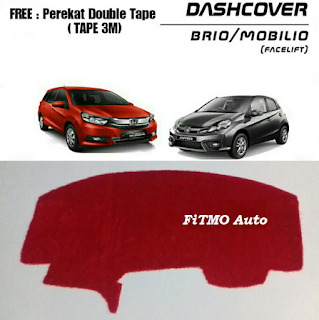The well-engineered but poor-selling Palio is still a highly relevant car, even though it hasn’t been face-lifted since it was launched in 2002. Poor service has been the Palio's bugbear but Fiat claims to have improved on this.:
The Palio has not had a visual face-lift since its launch, but it still looks sturdily handsome and feels superbly built and secure. The doors shut with a sound thunk, and the car’s build imparts a safe feel.
The car has specifically been engineered for developing markets, and over-engineered at that, so it is extremely tough and more thoroughly engineered than most small cars. Designed as Fiat’s ‘world car’, the Palio is also sold in markets like Brazil, Turkey and China, all of which require toughness and simplicity of design. Even the MacPherson strut/lower wishbone suspension in front and the torsion beam at the back are extremely tough, and built to last.
The Palio still looks pleasant and very grown-up, a clean, strong-looking and squat design livened up by the jewel-like headlamps and flame-shaped rear lamps. However, just to keep the pot boiling, Fiat has face-lifted the Palio in Brazil, and will bring that model here in 2005.
The Palio's interiors are spacious and comfortable, with passenger room comparable to a mid-size car. The seats, which are shared with the Siena, are extremely comfortable and feel like they belong in a bigger car. The ergonomics are excellent with all the controls well-placed and falling easily to hand. There is decent legroom, head-room and width, but the design is the same as on the Siena, introduced in 1998, and looks dated now.
The chunky steering is great to hold, the dead pedal to rest your left foot is a boon on long drives and the high-set music system that sits nicely in line with your vision makes you wonder why other manufacturers haven't adopted the same approach. A problem area is visibility, hampered by the thick A-pillar, high waistline and unhelpfully small mirrors; plus, we wish the Palio had seat height adjustment. Fit and finish aren't terrific, and the plastics feel downmarket.
With the disappearance of the fabulous 1.6, engine choice in the Palio is limited to a 1.2-litre NV petrol, and a 1.9 diesel. When Fiat introduced the NV version of the 1.2 Palio, the engine was recalibrated, more for efficiency than performance, to address the earlier car's thirst. It's not as responsive and feels sluggish at low revs. It's not near as quick as the competition but in reality it doesn't always feel that way. There's some meat near the 6000rpm red line and the near-perfect gear ratios help wring the maximum out of the 72bhp engine. The cable-operated gear lever is also a delight. It’s decent to drive in the city, but you do feel a lack of punch while overtaking on the highway.
Fuel economy is now on par with most small hatches, at 9.2kpl in the city and 14.0kpl on the highway. The diesel is fairly smooth, especially once you get going, but it's quite sluggish, and has almost no punch at the top. However, it has been optimally geared for the city, where it proves usefully torquey, if not instantly responsive. The diesel is fairly simple but quite indestructible, a 1910cc unit with 63bhp and 12.2kgm of torque. It’s no scorcher, and feels quite gravely and boomy at most speeds, but it responds really well, and the short gearing makes for surprising acceleration. It’s not a very relaxed cruiser, and top-end performance tends to tail off, but overall, it’s a good choice. The Palio’s weight affects it yet again, with figures of 11.8 and 15.7kpl, nowhere near the best.
The Palio has been blessed with a superb, strong chassis, blending a good ride with excellent handling. The steering feels lovely and accurate, there is little body roll, and passengers are well insulated from potholes. However, at low speeds, the Palio feels a bit stiff and lacks the compliance of, say, the Corsa. Also, the poor turning circle hampers manoeuvrability and the Palio is nowhere near as easy to park as its smaller rivals. The brakes have been improved over the years and offer good stopping power but the pedal feel is still mushy.
The Palio’s talents have never been in doubt – it is a spacious, sturdy and comfortable car, with a good interior and chassis, and a pair of decent if uninspiring engines. The problems lie with the company’s history of indifferent service and the car’s poor resale value. Also, new, spacious rivals mean that the Palio’s trump card, the ‘big-car feel’, is no longer unique. There however, a facelift expected in 2005, which may yet swing the tide back in the Palio’s favour. Fiat’s poor service has improved somewhat, but though spares prices have dropped, dealer attitude in general is indifferent. The car’s still worth the risk, especially considering the discounts available. However, there is real concern is over Fiat’s health in India, and the company isn’t giving signals that it plans to turn around yet.
The Palio has not had a visual face-lift since its launch, but it still looks sturdily handsome and feels superbly built and secure. The doors shut with a sound thunk, and the car’s build imparts a safe feel.
The car has specifically been engineered for developing markets, and over-engineered at that, so it is extremely tough and more thoroughly engineered than most small cars. Designed as Fiat’s ‘world car’, the Palio is also sold in markets like Brazil, Turkey and China, all of which require toughness and simplicity of design. Even the MacPherson strut/lower wishbone suspension in front and the torsion beam at the back are extremely tough, and built to last.
The Palio still looks pleasant and very grown-up, a clean, strong-looking and squat design livened up by the jewel-like headlamps and flame-shaped rear lamps. However, just to keep the pot boiling, Fiat has face-lifted the Palio in Brazil, and will bring that model here in 2005.
The Palio's interiors are spacious and comfortable, with passenger room comparable to a mid-size car. The seats, which are shared with the Siena, are extremely comfortable and feel like they belong in a bigger car. The ergonomics are excellent with all the controls well-placed and falling easily to hand. There is decent legroom, head-room and width, but the design is the same as on the Siena, introduced in 1998, and looks dated now.
The chunky steering is great to hold, the dead pedal to rest your left foot is a boon on long drives and the high-set music system that sits nicely in line with your vision makes you wonder why other manufacturers haven't adopted the same approach. A problem area is visibility, hampered by the thick A-pillar, high waistline and unhelpfully small mirrors; plus, we wish the Palio had seat height adjustment. Fit and finish aren't terrific, and the plastics feel downmarket.
With the disappearance of the fabulous 1.6, engine choice in the Palio is limited to a 1.2-litre NV petrol, and a 1.9 diesel. When Fiat introduced the NV version of the 1.2 Palio, the engine was recalibrated, more for efficiency than performance, to address the earlier car's thirst. It's not as responsive and feels sluggish at low revs. It's not near as quick as the competition but in reality it doesn't always feel that way. There's some meat near the 6000rpm red line and the near-perfect gear ratios help wring the maximum out of the 72bhp engine. The cable-operated gear lever is also a delight. It’s decent to drive in the city, but you do feel a lack of punch while overtaking on the highway.
Fuel economy is now on par with most small hatches, at 9.2kpl in the city and 14.0kpl on the highway. The diesel is fairly smooth, especially once you get going, but it's quite sluggish, and has almost no punch at the top. However, it has been optimally geared for the city, where it proves usefully torquey, if not instantly responsive. The diesel is fairly simple but quite indestructible, a 1910cc unit with 63bhp and 12.2kgm of torque. It’s no scorcher, and feels quite gravely and boomy at most speeds, but it responds really well, and the short gearing makes for surprising acceleration. It’s not a very relaxed cruiser, and top-end performance tends to tail off, but overall, it’s a good choice. The Palio’s weight affects it yet again, with figures of 11.8 and 15.7kpl, nowhere near the best.
The Palio has been blessed with a superb, strong chassis, blending a good ride with excellent handling. The steering feels lovely and accurate, there is little body roll, and passengers are well insulated from potholes. However, at low speeds, the Palio feels a bit stiff and lacks the compliance of, say, the Corsa. Also, the poor turning circle hampers manoeuvrability and the Palio is nowhere near as easy to park as its smaller rivals. The brakes have been improved over the years and offer good stopping power but the pedal feel is still mushy.
The Palio’s talents have never been in doubt – it is a spacious, sturdy and comfortable car, with a good interior and chassis, and a pair of decent if uninspiring engines. The problems lie with the company’s history of indifferent service and the car’s poor resale value. Also, new, spacious rivals mean that the Palio’s trump card, the ‘big-car feel’, is no longer unique. There however, a facelift expected in 2005, which may yet swing the tide back in the Palio’s favour. Fiat’s poor service has improved somewhat, but though spares prices have dropped, dealer attitude in general is indifferent. The car’s still worth the risk, especially considering the discounts available. However, there is real concern is over Fiat’s health in India, and the company isn’t giving signals that it plans to turn around yet.
 RSS Feed
RSS Feed Twitter
Twitter






 Friday, February 25, 2011
Friday, February 25, 2011
 Samipodo
Samipodo

1 komentar:
It is a very nice information about Fiat Palio D and Palio NV car.If anybody needs to Buy Fiat Palio D Tyres Online and Buy Fiat Palio NV Tyres Online please visit Tyreonwheels.
Post a Comment